ARTS DOMAIN
Jess Gray
Arts Instructional Leader
The Arts enable students to develop their creative and expressive capacities by learning about the different practices, disciplines and traditions that have shaped the expression of culture locally, nationally and globally.
Students are both artist and audience in the Arts. They make, respond and learn to appreciate the specific ways this occurs in different disciplines including the performing arts and the world of visual representation and expression.
The Arts includes Dance, Drama, Media Arts, Music, Visual Arts and Visual Communication Design.
Art Making and Exhibiting 1-2
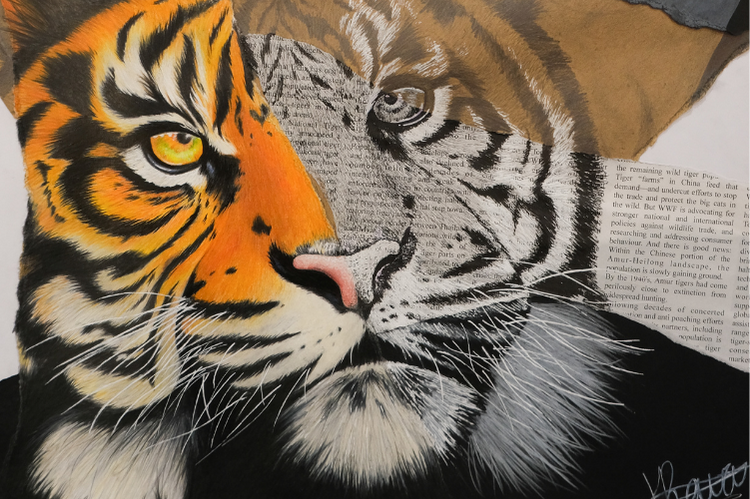
- Develop an individual studio process and practice
- Explore a range of materials, methods and media
- Examine and analyse artistic influences
Subject Code: V1AAE
Year Level: 11
Unit 1: Explore, expand and investigate
In this unit students explore materials, techniques and processes in a range of art forms.
What does this mean for me?
You use your individual ideas and explore a range of materials and techniques related to specific art forms. You will research and analyse the ways in which Australian artists from different contexts have developed their studio practice.
Assessment
- Visual Arts journal of exploratory work
- Presentation of at least one finished artwork
- Presentation on artists and an exhibition studied
- End of semester exam
Unit 2: Understand, develop and resolve
You will investigate how artists use art elements and art principles to develop aesthetic qualities and style in an artwork. You will begin to understand how exhibitions are planned and designed and how spaces are organised for exhibitions.
What does this mean for me?
You will:
- Investigate the intentions of artists and the different characteristics of their art making
- Trial materials, techniques and develop ideas around a theme to create works of art
- Progressively document art making to develop and resolve subject matter and ideas in at least one finished artwork.
Assessment
- Design and curate a thematic exhibition of six artworks
- Production of a series of experimental artworks documented in your Arts journal
- Production of at least one artwork
- End of semester exam
What sort of student would like Studio Arts?
Someone who enjoys visual arts, photography and design.
Pre-requisites
Nil. However, completion of Pathways subjects in Media or Visual Arts would be helpful. To undertake Unit 3 and 4, it is preferable to have completed Unit 1 and 2.
Other considerations
Students may be required to purchase some of their own materials.
Media 1-2
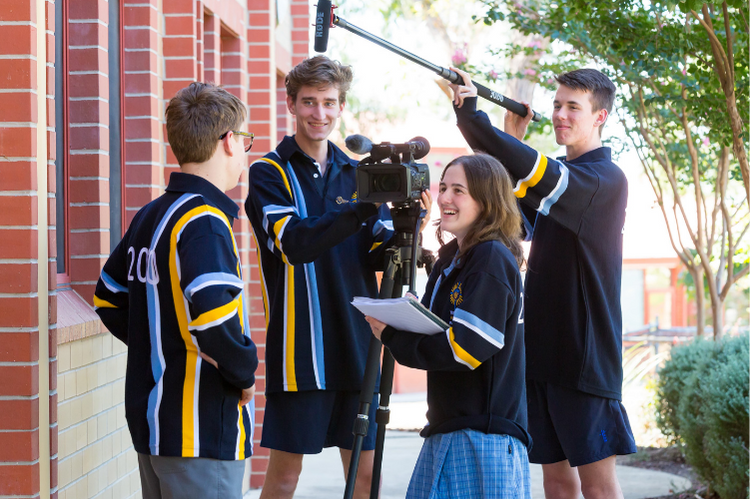
- Analyse the truth about what we see in the media
- Make your own media products
- Study the impact of media on Australian society
Subject Code: V1AME
Year Level: 11
Unit 1: Media forms, Representations and Australian stories
We explore how media in a range of media forms and from different times and places are constructed, distributed, engaged with, consumed and read by audiences (including Australian fiction and non-fiction). You also design and produce your own media representations for a particular audience.
What does this mean for me?
We consider a variety of media products such as advertisements, TV shows and films. You analyse how they are represented and how audiences perceive them. We study the representations of various Australian stories and how they impact audiences. You will also study the representations of film genres through trailers and posters, along with creating your own film trailer and poster, re-cutting or ‘flipping’ its genre. If you like film editing and analysing the way films are constructed, then this unit is for you.
Assessment
- Written tasks regarding representations
- Production of a media product in two forms
- End of semester exam
Unit 2: Narrative across media forms
We examine how narratives (stories) construct realities and meanings for audiences by looking at least two specific films. Our class looks at how audience, engagement, consumption and reception play a key role in understanding how a narrative is formed. You then apply this theoretical knowledge to create your own narratives. We also investigate the relationship between new and old media forms and how the development of media impacts society.
What does this mean for me?
If you like producing your own films, analysing how films are created and how audiences respond to films in different ways, then you shall enjoy this unit. If you like looking at how media technologies have changed over time and have replaced old forms of communication, then this would be of interest.
Assessment
- Oral Presentation on chosen Media creators
- Analysis of the making of a film
- Analysis of new media developments and their impact on society
- End of semester exam
What sort of student would like Media?
Someone who:
- Is interested in working in the media/communications industry in the future
- Enjoys planning and creating their own media production (a choice of film, photography, animation or print)
- Enjoys studies of Psychology, Sociology, History and English
Pre-requisites
Preferably a Pathways subject such as Media. Some knowledge of Adobe (Photoshop, InDesign, Premiere Pro) would be an advantage, but not essential.
Music 1-2
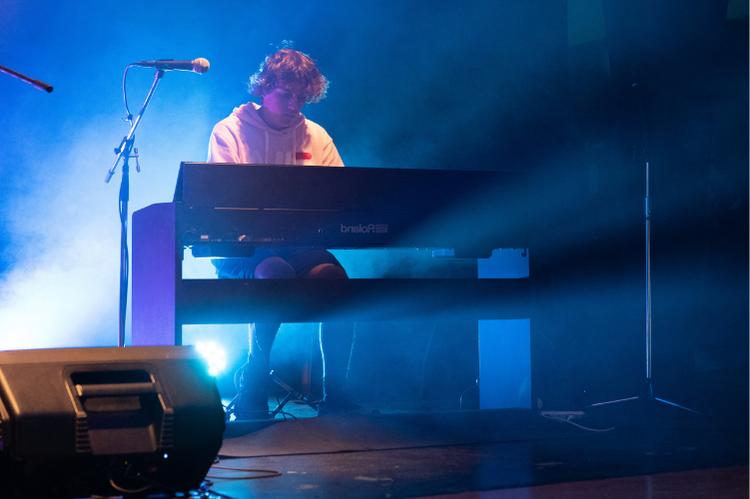
- Solo and group performances
- Familiarise yourself with music language
- Grasp instrumental techniques
Subject Code: V1AMP
Year Level: 11
Unit 1: Organisation of music
In this Unit, students actively engage in all aspects of music as listeners, performers, creators and music makers through:
- Developing and refining musicianship skills and knowledge
- Exploring and reflecting on and responding to the music they listen to, create and perform
- Analysing and evaluating live and recorded performances
- Incorporating, adapting and interpreting musical practices from diverse cultures, times and locations
- Developing knowledge and skills to compose, arrange, interpret, reimagine, improvise, recreate and critique music in an informed manner.
Assessment
- AOS 1 Performance (Ensemble) 10-15 minutes
- AOS 2 Technical test - written, multimedia or oral discussion outlining the chosen technical work and links to the recital pieces.
Unit 2: Effects in music
In this unit students build their performance and musicianship skills. They present formal and informal performances and participate in master classes. Students study the work of other performers through listening and analysis, and use specific strategies to optimise their own approach to performance. They study strategies for developing technical and expressive performance skills. They also devise an original composition or improvisation.
Assessment
- AOS 1 Performance (Ensemble) 10-15 minutes
- AOS 2 A written, multimedia or oral discussion outlining the chosen technical work and links to the recital pieces.
What sort of student would like Music?
- Someone who wants to extend themselves on their instrument of study.
- This is a unit for musicians who have a love for playing and wish to build their performance skills, experience and understanding.
- You need to be a motivated and committed musician.
This unit would not suit a beginner. You may need a private teacher to maximise your potential - speak to Craig Fullerton, our Music & Ensemble Coordinator, about accessing additional music tuition.
Pre-requisites
For Units 3-4, completion of Pathways and Year 11 Music units, a private instrumental teacher, and participation in the College’s band and choral programs.
Theatre Studies 1-2
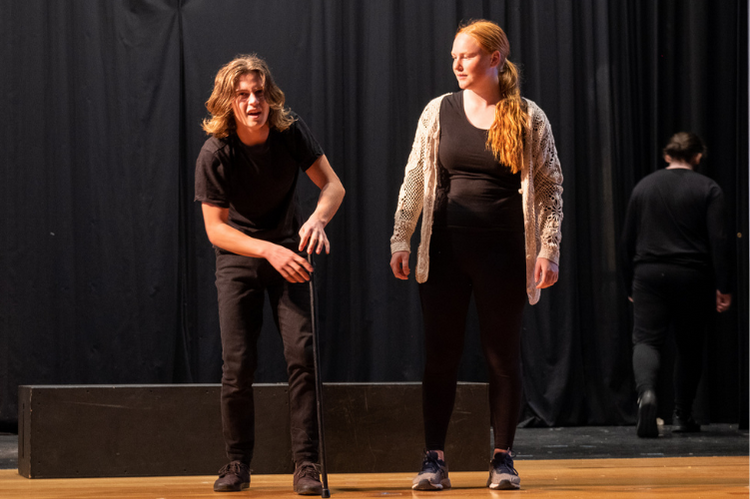
- Explore theatre styles and conventions
- Script interpretation
- Play analysis
Subject Code: V1ADT
Year Level: 11
Unit 1: Pre-modern theatre styles and conventions
Unit 1 focuses on the application of acting, direction and design in relation to theatre styles from the pre-modern
era, that is, works prior to the 1920s. Students creatively and imaginatively work in production roles with scripts from
the pre-modern era of theatre, focusing on at least three distinct theatre styles and their conventions.
Unit 2: Modern theatre styles and conventions
In Unit 2, students focus on the presentation of scripts from the pre-modern era of theatre. They work
creatively and imaginatively in at least two production roles to interpret scripts from three or more distinct theatre styles of the pre-modern era.
Assessment
One practice-based assessment and one written task. Assessments may include:
- Interpretation of scripts from the pre-modern era through the application of acting, direction and/or design: costume, make-up, props, set, lighting, sound
- Oral/visual/multimedia reports and/or presentations
- Structured questions
- A research report
What sort of student would like Drama?
Someone who enjoys performing and working with others to create characters and scripts. You should like investigating character types and exploring a variety of performance styles and conventions.
Pre-requisites
Preferably Pathways Drama courses.
Other considerations
- Effective time management and strong organisational skills are essential.
- Much of the script-writing and rehearsals will take place outside of class time. You must also be available to attend excursions.
Visual Communication Design 1-2
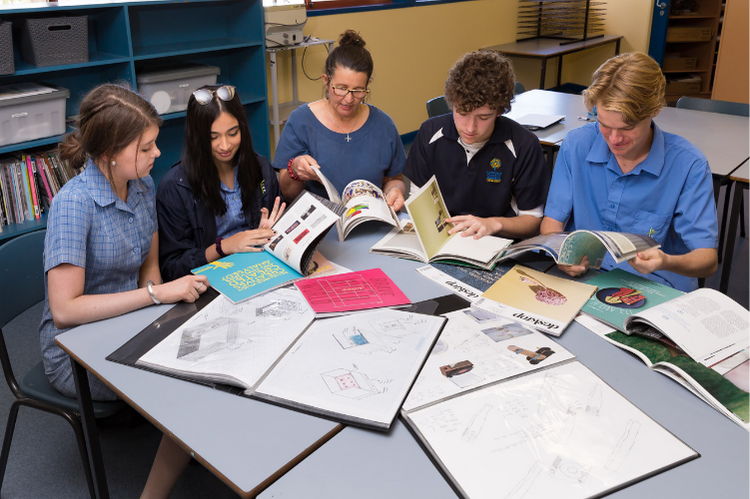
- Convey visual language through logos, posters and more
- Focus on design that helps solve environmental challenges
- Incorporate a range of handmade and digital techniques
Subject Code: V1AVC
Year Level: 11
Unit 1: Finding, Reframing and Resolving design problems
In this unit students are introduced to the practices and processes used by designers to identify, reframe and resolve human-centred design problems. They learn how design can improve life and living for people, communities and societies, and how understandings of good design have changed over time.
Assessment
- AOS 1: A report, a presentation and a written brief
- AOS 2: A folio of work and a presentation
- AOS 3: A folio of work
Unit 2: Design Contexts and Connections
Unit 2 builds on understandings of visual communication practices developed in Unit 1. Students draw on conceptions of good design, human-centred research methods and influential design factors as they revisit the VCD design process, applying the model in its entirety. Students adopt the practices of design specialists working in fields such as architecture, landscape architecture and interior design, while discovering the role of the interactive designer in the realm of user-experience (UX). Methods, media and materials are explored together with the design elements and principles, as students develop spaces and interfaces that respond to both contextual factors and user needs.
Assessment
- AOS 1: A folio of work
- AOS 2: A written response, report or presentation
- AOS 3: A folio of work
What sort of student would like Visual Communication Design?
Someone who has an interest and passion for design and enjoys thinking creatively and working through the design process.
Pre-requisites
Any Pathways Visual Communication Design subject would be useful but not essential. Some knowledge and interest in using Adobe Photoshop and Illustrator is strongly advised.
Other considerations
Visual Communication Design is a useful pathway for students wanting a career in any type of design such as; graphic, interior, architectural, fashion, environmental, landscape and industrial design.
